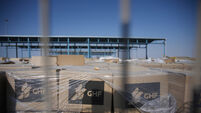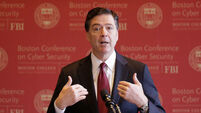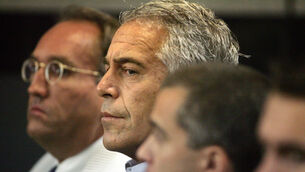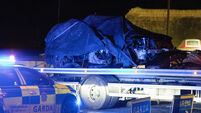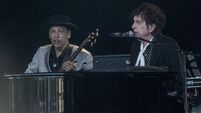Space tourist heads for International Space Station
The world’s first ‘‘space tourist’’ was today heading towards the International Space Station.
Californian businessman Dennis Tito, 60, made history shortly after 8.30am yesterday when a Russian Soyuz rocket blasted off from central Asia under clear blue skies.
The spaceship with Tito strapped inside left a trail of red flame and a vapour tail as it headed above the clouds towards the edge of the Earth’s atmosphere before travelling into space, where he and his cosmonaut ‘‘guides’’ became weightless.
The shuttle is due to dock with the International Space Station, although it could take two to three days to arrive.
Tito’s trip marks a landmark change in the way people view space travel, opening it up to ordinary people and taking away some of the mystique.
A spokesman for the Association of British Travel Agents said space travel holidays were the next obvious step for eager travellers.
‘‘The whole issue of package holidays over the last 40 years has made the world progressively a smaller place, so the logical conclusion of that is that people will start taking their holidays in outer space.
‘‘But we won’t see that for a good 50 years,’’ he added.
Tito’s hopes of reaching space were nearly upset by an 11th-hour disagreement between Nasa and Russian space officials.
Computer problems have kept the space shuttle Endeavour docked at the station longer than expected as astronauts try to carry out operations of a critical robot arm.
Nasa was concerned that the Russian spaceship docking so close to the US shuttle could be dangerous.
But the Russian’s refused to delay the launch and agreed to put the Soyuz in a holding pattern if the shuttle was still at the space station on Monday.
Nasa said Endeavour could leave on Sunday, but only if the computer trouble was resolved quickly.
Tito paid 20 million dollars (£13m) for the trip, and had to undergo a gruelling training programme to prepare his body for the stresses of space travel.
There had been a wrangle over whether a tourist should be allowed to go to the space station.
Nasa tried to block the flight, insisting Tito’s presence could jeopardise the work of the ISS crew.
But the Russians said Tito, a former rocket engineer, received the equivalent of a professional cosmonaut’s training.
Tito’s girlfriend Dawn Abraham watched his take-off.
The Russian cosmonauts will replace the space station’s escape craft during the trip. Its lifetime expires at the end of the month.
The Soyuz space ship will then act as the new ‘‘lifeboat’’ and Tito and the two cosmonauts will return on the older craft.
This move could see a surge in interest by people eager to follow in Tito’s footsteps and take a break far above the earth.
Bristol-based adventure holiday organiser WildWings offers space travel to interested Britons - but at a cost.
The company represents US-based Space Adventures Ltd in the UK and is already taking bookings.
Its website says the company ‘‘can anticipate introducing new space related holidays in time’’.
The site www.wildwings.co.uk offers sub-orbital space flights for five nights, costing £70,000.
The wide range of space packages also includes a three-month orbital space flight costing a massive £14m.
Flights to the ‘‘edge of space’’ cost £8,995 in a Mig-25 ‘‘Foxbat’’ plane and there are also zero-gravity and supersonic flights. A sub-orbital flight goes to at least 62 miles above Earth.
Central London-based international design and consulting practice, specialising in hospitality, leisure and entertainment, Wimberly, Allison, Tong and Goo has already designed a space resort in low Earth orbit.
If all goes to plan a space trip will include a stop over at the resort, 200 miles above Earth, by 2017, it says.






